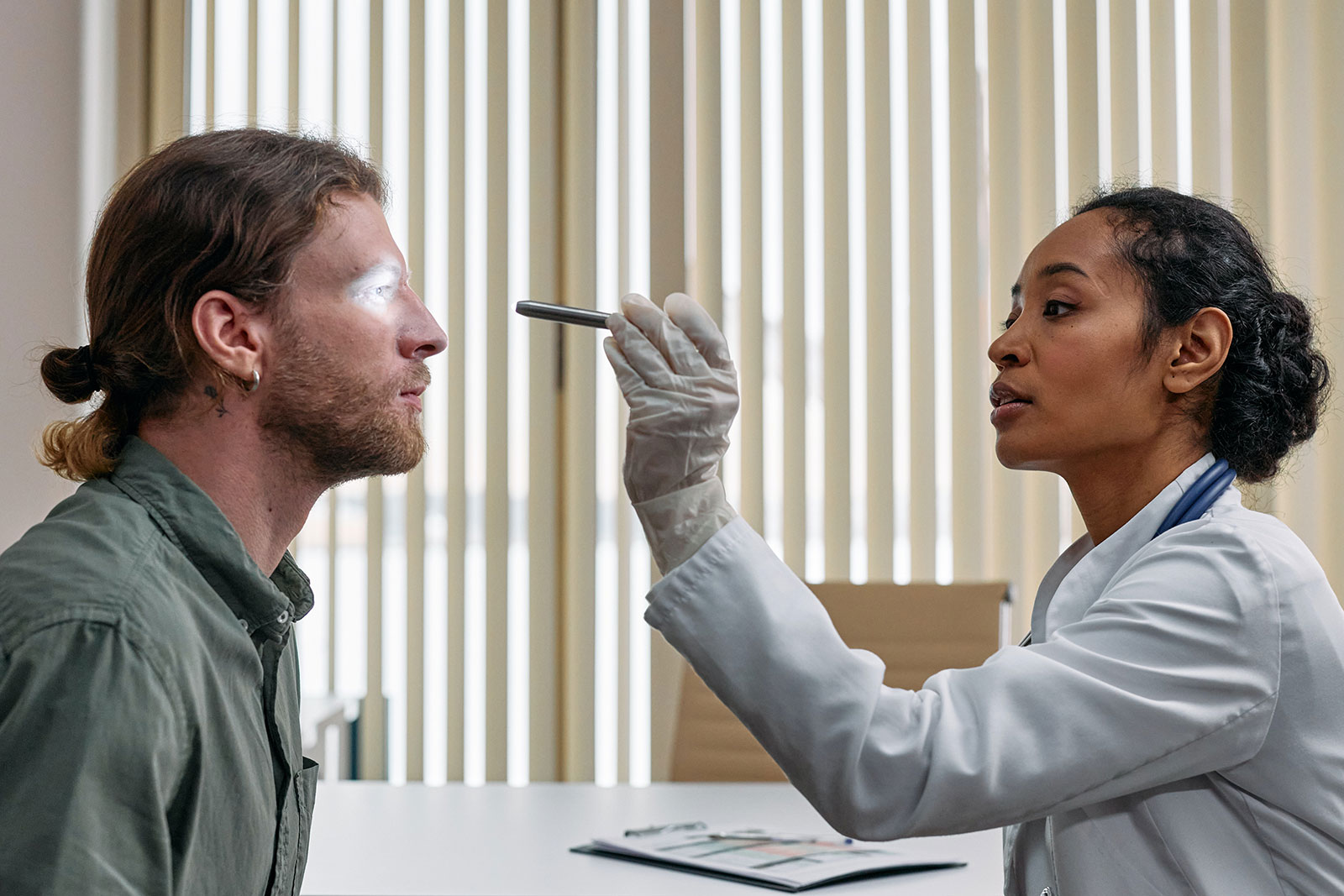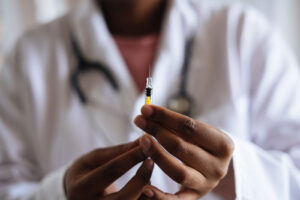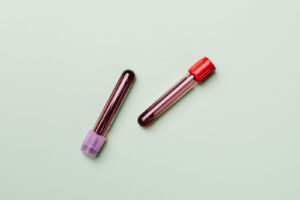Why are men more likely to develop melanoma compared to women?
 Part of it is just male grooming habits. Guys don’t use products and aren’t used to using products on their faces much. And so, even women who wear makeup but aren’t specifically trying to use sunscreen know that makeup itself has some protection to it. There’s studies that show that androgen levels can affect the ability of the skin to repair UV damage as well as the natural composition of men’s skin in terms of its ability to repair UV damage and the collagen distribution compared to women. For women, the most common location for melanoma is on the legs and for men, it’s the head and neck. That might be why men tend to have it more on the head and neck, because of those factors.
Part of it is just male grooming habits. Guys don’t use products and aren’t used to using products on their faces much. And so, even women who wear makeup but aren’t specifically trying to use sunscreen know that makeup itself has some protection to it. There’s studies that show that androgen levels can affect the ability of the skin to repair UV damage as well as the natural composition of men’s skin in terms of its ability to repair UV damage and the collagen distribution compared to women. For women, the most common location for melanoma is on the legs and for men, it’s the head and neck. That might be why men tend to have it more on the head and neck, because of those factors. What is an androgen?
Androgen is a type of hormone. It’s typically what we think of as one of the male hormones and estrogen is a female hormone. And in women, you have a much lower amount of androgen than you do in men. For women, that androgen hormone is converted to estrogen by our enzymes.
There is a higher death rate for men with melanoma than women. Why is that the case?
Men are less likely to go to the doctor and are probably less likely to notice when there is an atypical lesion on their skin. But also, one of the factors that I mentioned earlier is the decreased ability to repair the skin. The damage could definitely be a contributing factor to the more aggressive melanomas that men have. And so, even if women develop melanoma, early detection and the body’s ability to at least contain the melanoma would make it less aggressive in women versus men.
What sort of preventative measures should men take now to avoid the possibility of developing melanoma?
There are only a couple parts of this that we can control. Obviously, we are not in the age where we can alter our genetics, but we can control our environment. And so I think UV protection is really important. And that’s not just wearing sunscreen. That includes UV protective clothing, avoiding the sunniest times of the day and not being out for prolonged periods of time during the sunniest parts of the day. People are often fooled by cloud cover. You can still get UVA, even though you don’t get as much UVB, so you still need sunscreen for men’s scalps. Even women who have thinning hair forget to protect their scalps and use sunscreen or hats. Hats are the best way to protect your scalp.
And then having regular skin exams for high-risk populations, so people who have fair skin and freckles as well as redheads, people with a family history of melanoma and people who have 50 or more moles. Those folks—even if they’ve never had skin cancer—should be getting their skin examined at least once a year. And then, of course, doing self skin exams at home. If you notice something new or unusual looking, make an appointment to see a dermatologist for early detection.
What other steps are involved in doing a self skin exam?
We recommend that these are done monthly. And then the ‘ABCDEs’ of melanoma. So looking at your moles, and assessing them for symmetry, as well as a demarcated border. The color should be just one color. ‘D’ is the diameter. So typically, we like them to be longer or smaller than a pencil eraser. And ‘E’ is evolving. If it’s changing, that’s a reason to get them checked out.
Why is the number of advanced melanoma cases currently on the rise?
Part of it is, are we just detecting them more? Overall, the numbers are going up, but it appears to be in specific populations. With the younger population, it looks to be holding steady, but then with the older population, it appears to be increasing. And part of that is because we have more elderly people with health care access. They’re being detected more frequently and people are living longer. The longer we live, the more likely we are to get cancer, just as our natural DNA repair mechanisms erode over time. Once you’re getting into the 80+ year old population, then there’s not a lot you can do to sort of repair their DNA repair mechanisms or to undo the sun damage and the environmental damage they’ve had in the past. But really, preventing that damage from happening is the most important part of keeping that incidence number down.







